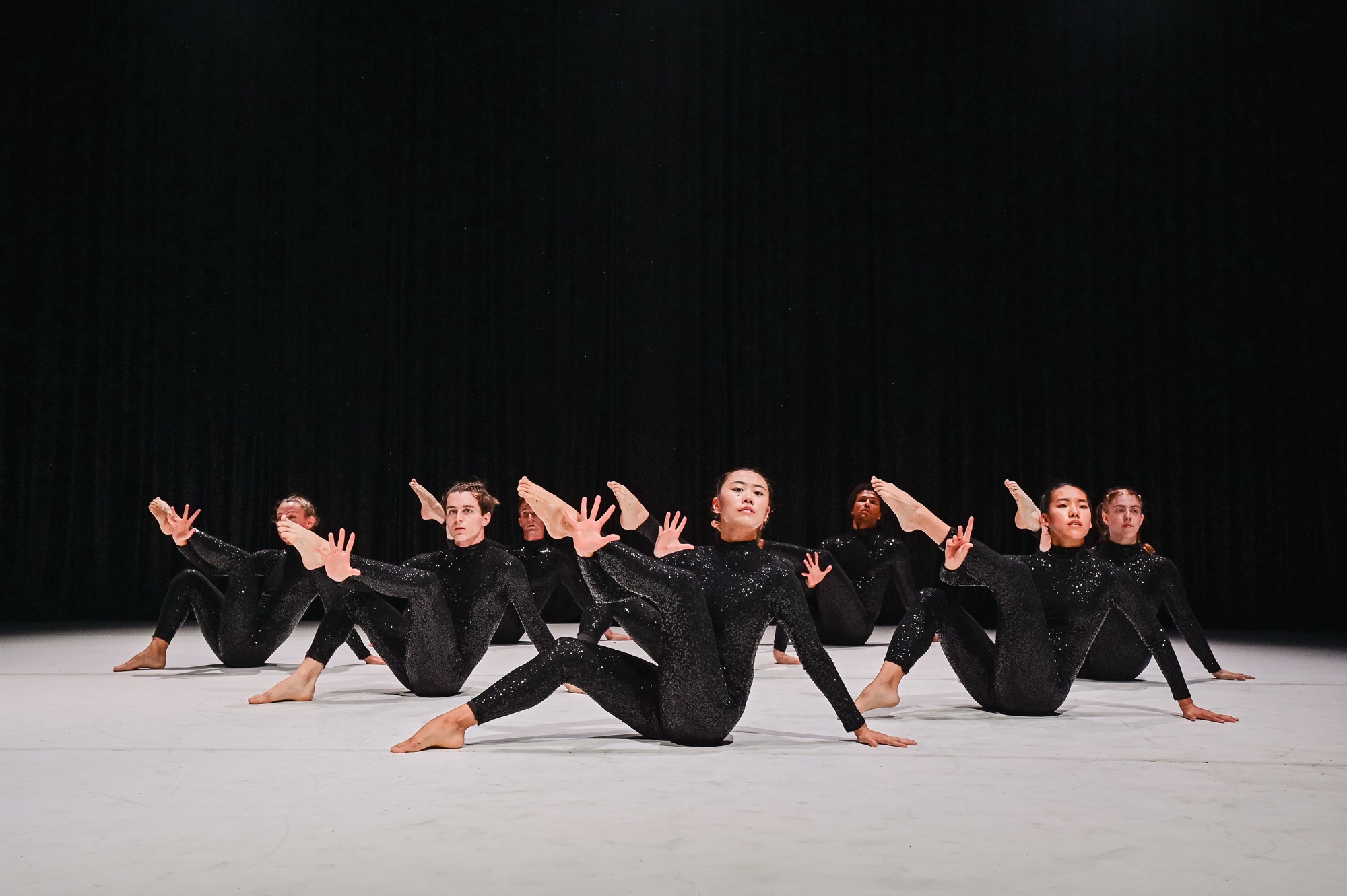Words by Isabela Palancean.
Presented by National Company Dance Wales, SURGE / GWEFR introduced a triple-bill comprising three new works, guiding the viewer on a warped journey from dreamlike liminality to a post-humanist universe, to finally land in the realm of ancient myth.
Infinity Duet – Faye Tan
The first piece to inaugurate the evening was ‘Infinity Duet’ – a collaboration between Wales-based choreographer Faye Tan and sculpture artist Cecile Johnson Soliz, blurring the boundaries between live sculpture and dance. The precise linework created a graceful continuity between the dancers’bodies and the abstract drawings of Johnson Soliz, where it wasn’t quite clear whether the drawings danced or the dancers were drawing. This continuity extended to the giant swing itself, playing the role of a third dancer as gravity materialised. Richard McReynold’s hauntingly textural scorebreathed new life into the paper-made sculpture by using a blend of crumpling, pulling and ripping paper to create an overall organic atmosphere.
Commenting on their collaboration previously, both Tan and Johnson Soliz mentioned the exploration of time and space, which is mutual to both dance and sculpture. As the dancers moved between states of flow, stillness and bursts of running,time stretched and accelerated – in constant dialogue with the swing. Watching ‘Infinity Duet’ felt like meditation, as the boundaries between object and subject, natural and human made seemed to dissolve.
Waltz – Marcos Morau
For the evening’s second piece titled ‘Waltz’ by Marcos Morau, the stage was completely transformed to give birth to an alien world, taking shape from a dazzling darkness. The opening scene was reminiscent of Jonathan Glazer’s Under the Skin, where the extra-terrestrial creature pulls her victims into a sensual void. Here, however, the effect was reversed, as the creature-dancers’ movement thrust outward, crawlingthrough the void. Through a series of hypnotic phrases, the choreography marked the dancers’ evolution from amorphous, coagulated mass into sharply articulated forms. Rhythmic stop and start pulses created a sense of coded communication, signalling that, despite gradual separation,the creature-dancers remained connected at their centre.
Morau’s juxtaposed musical score merging the classical with the contemporary, and the human with the machine-like, pointed toward a need for continued transformation. As the piece concluded with an open hand gesture, we were left with the feeling that the future is eerily within reach.
Mabon – Osian Meilir
A different kind of metamorphosis or post-human existence was explored in ‘Mabon’ by Osian Meilir, the evening’s third and final piece inspired by a story from the Mabinogion – a collection of ancient Welsh mythology.
Through incredibly elaborate costumes designed by Becky Davies, the dancers morphed into six mythical animals, embarking on a quest to find the much famed, yet little understood Mabon. While the name is likely derived from ‘Maponos’ – the Celtic equivalent of Apollo representing youth and vitality – more recently, the Mabon has been linked to pagan traditions around the autumn equinox. Its wide-ranging influence was reflected in Meilir’s use of traditional Welsh motifs such as circular dances and heel-and-toepatterns, but also in its intense joy and theatricality accentuated by the use of intricate masks throughout.
Weaving Cerys Hafana’s triple-harp with lines from the original Middle-Welsh and a highly dynamic choreography, ‘Mabon’ offered a daring reimagining of folklore and oral storytelling. As the six dancers gathered to honour ‘Mabon’ after a storm of stomping and surging energy, the stage finally stilled, carrying echoes of Njinski’s ‘Rite of Spring’ in its wake.
Image by Kirsten McTernan.
